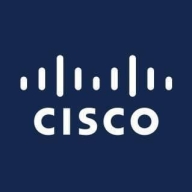


Cisco Meraki MX and Fortinet FortiOS compete in the network security solutions category. Fortinet FortiOS seems to have the upper hand due to its wider range of security capabilities and greater configuration flexibility.
Features: Cisco Meraki MX stands out for its centralized cloud management, firewall, SD-WAN, traffic shaping, and VPN capabilities. Its cloud-based dashboard allows for seamless setup and management from anywhere. Fortinet FortiOS is recognized for robust security features like intrusion prevention, web filtering, and advanced threat detection, with a user-friendly graphical interface for easy management.
Room for Improvement: Cisco Meraki MX could enhance load balancing, simplify VPN configuration, and offer more competitive pricing. Improvements are needed in event logging, reporting, and integration with other systems. Fortinet FortiOS requires advancements in cloud functionality and better integration with third-party solutions, along with improvements in its GUI and memory utilization issues.
Ease of Deployment and Customer Service: Cisco Meraki MX is favored for its easy deployment in public clouds and excellent customer service, noted for quick responsiveness. Fortinet FortiOS, primarily deployed on-premises, is also valued for reliable customer support, though experiences may vary by region.
Pricing and ROI: Cisco Meraki MX, despite being expensive, provides good ROI through ease of management and comprehensive features, justifying the long-term investment for some users. Fortinet FortiOS offers competitive pricing relative to high-end competitors but can be costly for small businesses. Users report positive ROI, although licensing complexity may pose a challenge for some.
Clients are now comfortable and not wasting productive hours on IT support.
The automation part is giving us a cost benefit and speed; we can react faster.
It's a very useful tool to mitigate and protect your enterprise.
Once it is deployed, I do not have to revisit or replace the hardware.
The pricing of FortiOS is competitive and reasonable compared to other leading products such as Palo Alto and Check Point.
Fortinet is strong in terms of cost and compatibility with other vendors.
They offer very accurate solutions.
The quick resolution of issues with Fortinet FortiGate is due to the support of the company and the fact that the equipment is easy to work with.
I would rate the technical support for Fortinet FortiGate a ten out of ten.
When we raise a ticket with Meraki MX, they instantly become available to support us for configurations or troubleshooting.
Cisco's TAC support for Cisco Meraki MX is excellent because no other OEM provides support at this level.
I would rate them nine or ten out of ten.
Fortinet technical support is very responsive and helpful.
Support engineers sometimes lack eagerness to assist with issues such as the memory problem.
They scale up really well from smaller models like the FortiGate 40 and 50 to bigger sites with the FortiGate 100 for more throughput - up to enterprise datacenters.
The variation comes in terms of the interfaces and throughputs, but from a security perspective, you get the same benefit, irrespective of whether you have an entry-level unit or an enterprise.
We determine sizing based on multiple factors: number of users, available links, traffic types, server count, services in use, and whether services will be published.
When you have hundreds of thousands of people it is very difficult to scale in Meraki.
We have Juniper solutions, and I would say the Juniper solutions can scale better, however, this solution is still very scalable.
When customers' networks grow and needs expand, we can easily switch between models to trade up devices.
It allows for the expansion of users and devices without additional licensing costs.
Fortinet FortiOS is scalable, allowing the addition of users and firewalls as required.
We're experiencing 99.999% availability consistently.
I would rate the stability of Fortinet FortiGate a ten out of ten.
Currently, we are experiencing a general outage of one of the main internet service providers of the Dominican Republic, and we have not been impacted in our operations because with SD-WAN, we have another internet service provider and we are working with the second WAN connection without any disruption.
There have been no outages, no stability issues, and we have not found any vulnerabilities during security audits.
While the product is largely stable, it sometimes faces memory issues in specific versions like 11 OE, which can be disruptive.
Stability is a seven out of ten because during version migrations, and sometimes with new versions, Fortinet is not as good.
I would rate the stability of FortiOS as an eight out of ten.
Investing in a solution that can accommodate such growth would be more cost-effective than repeatedly purchasing new hardware.
While Fortinet claims to offer a comprehensive network solution, it falls short in addressing computer application issues, particularly server security.
When considering Sophos XG, which we also use, the logging and reporting functionality is notably more efficient.
It should automatically remediate and find out the issue and then resolve it on its own without interrupting the work of the employees.
Data is the only path, so optimization is essential.
An improvement would be to use Cisco Meraki MX as a software solution as well, which might reduce the cost.
Fortinet FortiOS faces memory issues, which can lead to unexpected downtimes.
There should be more documentation on how to use the CLI or how to perform CLI versions of tasks that can be done through the GUI.
Compared to other market leaders like Palo Alto and Check Point, FortiOS has many bugs in its initial releases.
Last year, I renewed the support for three years, which can sometimes be expensive but depends on the security benefits and how it helps us.
It offers cost savings as it is generally cheaper than the competition.
It is about 20% cheaper.
I get it for $25,000, a device that can connect up to 75-100 users, whereas in Meraki MX, it goes to 75,000-80,000 per access point.
The price could be reduced by around 30% to make it more comfortable.
In terms of pricing, I would say it is not the cheapest, but it was comparable to the others.
It is an affordable solution for us.
Fortinet products are somewhat pricey, similar to Cisco equivalents, however, they have justified their price point.
I am satisfied with the pricing, licensing, and setup costs of FortiOS, rating it nine out of ten compared to other familiar leading firewalls.
In terms of security, we have not experienced any security flaws or loopholes, and it has proven to be quite stable.
FortiGate has helped reduce the risk of cyberattacks that might disrupt our client's production.
These features help reduce our downtime, manage the ISPs, and deploy SLAs for all the website traffic.
Meraki MX is among those top solutions in their exceptional approach towards VPN-less, Zero Trust client access to office private networks.
We understand that Cisco solutions are very reliable, and we really like the simple management.
Since cybersecurity is my main concern, this type of miscommunication relating to vulnerability blocking is crucial.
It is user-friendly when it comes to turning on features, and it has been reliable and effective.
The threat intelligence in FortiOS is very high, and the system is scalable without additional licensing costs.
The solution offers good threat intelligence, which is crucial for our customers' security purposes.
| Product | Market Share (%) |
|---|---|
| Fortinet FortiGate | 19.9% |
| Cisco Meraki MX | 3.5% |
| Fortinet FortiOS | 1.2% |
| Other | 75.4% |



| Company Size | Count |
|---|---|
| Small Business | 350 |
| Midsize Enterprise | 130 |
| Large Enterprise | 187 |
| Company Size | Count |
|---|---|
| Small Business | 42 |
| Midsize Enterprise | 17 |
| Large Enterprise | 16 |
| Company Size | Count |
|---|---|
| Small Business | 42 |
| Midsize Enterprise | 13 |
| Large Enterprise | 23 |
Fortinet FortiGate excels in providing integrated VPN, firewalling, and Unified Threat Management (UTM) with centralized management and high availability. It supports remote access and comprehensive threat protection, making it a preferred choice for securing networks.
Fortinet FortiGate offers a robust security platform with features such as strong intrusion prevention, application control, and web filtering. Its integration with Active Directory and SD-WAN functionality provides scalable solutions for large networks. Users appreciate its ease of use through centralized management interfaces, ensuring robust security with flexible configurations. However, FortiGate could enhance its graphical interface and technical support responsiveness, address firmware bugs and costly licensing, improve logging, integrate better with third-party tools, and strengthen scalability and memory for log storage. Complexity in configuration and the need for intuitive features are noted challenges, and there's a demand for advanced security, zero-trust capabilities, and AI integration.
What are the key features of Fortinet FortiGate?Fortinet FortiGate is widely implemented across industries like education, finance, and government. Companies use it for firewall protection, VPN, and SD-WAN capabilities, ensuring secure perimeter and data center security. It facilitates remote access management and traffic routing optimization, offering reliable security and connectivity solutions.
Cisco Meraki MX offers cloud-managed security with user-friendly setup and efficient management, enhancing VPN and firewall functionalities for businesses.
Cisco Meraki MX is known for its robust cloud-based network management, featuring AutoVPN, SD-WAN, and advanced security. Its centralized control over firewall, traffic shaping, and monitoring ensures excellent connectivity and security. The interface allows easy management by non-technical staff, offering remote access and seamless network performance through real-time alerts and troubleshooting. It supports global connectivity with minimal effort, addressing needs across small to enterprise environments. Despite its strengths, users point out areas needing improvement like load balancing, VPN features, more flexible logging, and session capabilities. Pricing, integration limits, and licensing need enhancement.
What are the key features of Cisco Meraki MX?In industries like retail, finance, and education, Cisco Meraki MX provides enhanced security and connectivity. Retail chains benefit from easy VPN setups for secure multi-site networking, while educational institutions find value in its ability to manage large campuses efficiently. Financial services leverage its robust security features to protect sensitive data, ensuring compliance and trust.
Fortinet FortiOS is a comprehensive security operating system that powers Fortinet's network security solutions. It provides advanced threat protection, network visibility, and centralized management for organizations of all sizes. With its robust features and intuitive interface, FortiOS enables businesses to secure their networks, applications, and data from cyber threats.
One of the key features of FortiOS is its advanced threat protection capabilities. It incorporates multiple security technologies, including firewall, antivirus, intrusion prevention system (IPS), and web filtering, to detect and block a wide range of threats. This ensures that organizations are protected against malware, ransomware, and other malicious activities. FortiOS also offers extensive network visibility, allowing organizations to monitor and analyze network traffic in real-time. This visibility enables businesses to identify potential security risks, detect anomalies, and take proactive measures to mitigate threats.
Additionally, FortiOS provides detailed reports and analytics, helping organizations gain insights into their network security posture. Centralized management is another crucial aspect of FortiOS. It allows businesses to manage and configure their security policies, devices, and users from a single console. This simplifies the management process and ensures consistent security across the entire network infrastructure.
Moreover, FortiOS supports integration with other Fortinet products, enabling seamless security orchestration and automation. FortiOS is designed to be scalable and flexible, making it suitable for organizations of all sizes. It offers a range of deployment options, including physical appliances, virtual machines, and cloud-based solutions. This flexibility allows businesses to choose the deployment model that best fits their requirements and easily scale their security infrastructure as their needs evolve.
We monitor all Firewalls reviews to prevent fraudulent reviews and keep review quality high. We do not post reviews by company employees or direct competitors. We validate each review for authenticity via cross-reference with LinkedIn, and personal follow-up with the reviewer when necessary.